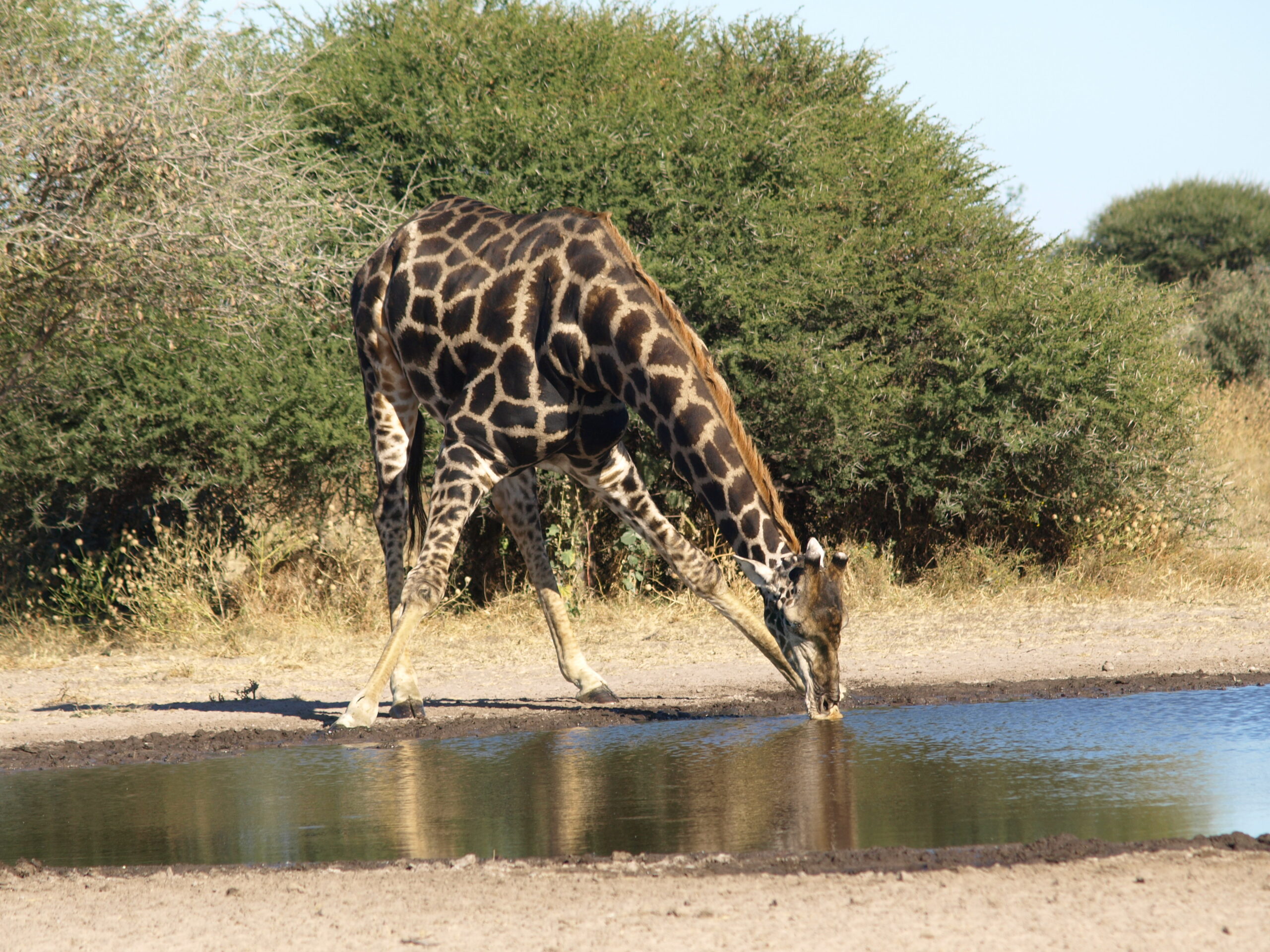Nothing prepares you for the immensity of this reserve, nor its wild, mysterious beauty. There is the immediate impression of unending space, and having the entire reserve to yourself.
Waist-high golden grasses seem to stretch interminably, punctuated by dwarfed trees and scrub bushes. Wide and empty pans appear as vast white stretches of saucer-flat earth, meeting a soft, blue-white sky. At night the stars utterly dominate the land; their brilliance and immediacy are totally arresting.
The Central Kalahari game Reserve (CKGR) is the largest, most remotely situated reserve in Southern Africa, and the second largest wildlife reserve in the world, encompassing 52 800 sq kms.
During and shortly after good summer rains, the flat grasslands of the reserve’s northern reaches teem with wildlife, which gather at the best grazing areas. These include large herds of springbok and gemsbok, as well as wildebeest, hartebeest, eland and giraffe.
At other times of the year, when the animals are more sparsely distributed, the experience of travelling through truly untouched wilderness, of seemingly unending dimensions, is the draw.
The landscape is dominated by silver terminalia sandveldt, Kalahari sand acacias, and Kalahari appleleaf, interspersed with grasslands, and dotted with occasional sand dunes, pans and shallow fossil river valleys.
CKGR is unique in that it was originally established (in 1961) with the intention of serving as a place of sanctuary for the San, in the heart of the Kalahari (and Botswana), where they could live their traditional hunter/ gatherer way of life, without intrusion, or influence, from the outside world.
The reserve was closed for about 30 years, until in the 1980s and 1990s, both self-drive and organised tours were allowed in, albeit in small, tightly controlled numbers.
The Botswana government has initiated plans to develop tourism away from the Okavango and Chobe areas, and has allocated concessions for lodge construction, both at the peripheries of and inside the reserve, allowing for fly-in tourists.
The northern deception valley is one of the highlights, principally because of the dense concentrations of herbivores its sweet grasses attract during and after the rainy season (and of course the accompanying predators). It is also the most travelled area of the reserve, with a number of public campsites, and proximity to the eastern Matswere Gate. The other two gates are completely at the other side of the reserve, at Xade and Tsau, where public campsites are also available.
Other worthwhile areas to drive are Sunday and Leopard Pans, north of Deception Valley, Passarge Valley, and, further south, Piper’s Pan.
Sightings include: Oryx, springbok, Lions, Leopards, Jackals and Cheetahs
There is a place at the heart of the Central Kalahari Game Reserve in Botswana that has confused travellers for centuries, and today even seasoned pilots are taken in by the mirage that is Deception Pan. Deception Valley is the course of an ancient river that once flowed in the wetter times – thousands of years ago.
During the rainy season when the grass in the valley is lush and green the site of thousands of animals can make you forget how dry the area is in general. Despite being in the Central Kalahari Game Reserve, Deception Valley is grassed and lies between wooded dunes. This habitat provides for wildlife year round, even during the dry season when there is no surface water. The valley is the remnant of the ancient Deception River, still marked as such on many maps, and this has caused many disgruntled visitors to wonder why the area is so dry.
Targeted bird species: Secretary bird, Orange river Francolin, Northern Black Korhaan, Larks – Monotonous, Spike-healed, Fawn-coloured, Flappet, Eastern Clapper, Southern Pale Chanting Goshawk, Booted Eagle, Capped Wheatear, Desert and Tinkeling Cisticola and Ant-eating Chat.
Passarge Valley in located in the Central Kalahari Game Reserve. The Reserve is located in one of Botswana’s exciting attraction destination concentrated with immense species of wildlife and also known as the world’s second largest game reserve. The area is covered with shrubs and dwarfed tree giving a spectacular game sighting. After summer rains the area is covered with sweet grass that attracts various species of wildlife.


